#Functional Components and Hooks
Explore tagged Tumblr posts
Text
#tutorial#shorts#react#react developer#state vs props#props#State#Stateless components#Stateful Components#class components#functional component#hooks#life cycle methods#Components#JSX (JavaScript XML)#Props#Component Lifecycle#Functional Components and Hooks#React Router#State Management#Conditional Rendering#Lists and Keys#Forms and Controlled Components#Component Composition#Styling#Error Handling#Testing#Performance Optimization#React DevTools
0 notes
Text
important to note that the only path to failing a class that i saw & was worried about (does not include paths where i just straight up give up. only paths where i try at least a little bit but am unsuccessful) is now closed. i had contributed 0 to this one group project, and was super lost and didn’t really know HOW to contribute, and said “hey guys i noticed i haven’t really had much chance to contribute, i don’t have a lot of ideas on how to help but i really want to pull my weight so if there’s anything you think i should do pls lmk” (to be clear this is not a “divide up the work & go” kinda project. we are trying to build something we don’t really know how to build. so one guy was like “i could try to build it this way?” and built it and now we’re, vaguely, improving on that) and somebody was like “yeah it’s tough to divide things up, maybe you could make a react app to present it?” so i made a react app. so now i’ve helped and nobody is going to go “professor she hasn’t helped!” and he isn’t going to say “0 for you, woman” and i won’t auto-fail. 🥳
#post tag#girl who is going to be ok#baby’s first from scratch react app everyone say you’re proud#look at her she’s a frontend dev!#(i used a template. i assume i’m allowed to use a template and still say it’s from scratch)#took me 3 ish hours i’m so goated#(… it was simple but also not. i had some issues)#(some issues i’ll never have again! that’s the beauty of baby’s first from scratch [x])#(like for example. i was trying to run state setters in the function for the component. very bad! i need a useEvent hook. now i know)
0 notes
Text
Function component state using hooks
In react, we can create components two ways, either class component or function component. When creating component using class, it will be easy to manage the state of a component, but how can we do with the function component? Since React 16.8 react introduced a concept of hooks to manage the state of function component, named useState function. Managing state is not the only functionality hook…
View On WordPress
0 notes
Text
Deciphering the invaders' language in the Hundred Line demo

After playing the hundred line demo recently, I gathered up any screenshots I could of the script the invaders use and I believe I've managed to decode all of it so far, so I wanted to share my findings here! I'll put the rest under the cut for anyone who wants to avoid it—I don't think anything I've translated so far would reveal any huge plot twists, but the game certainly doesn't expect you to be able to understand it.
Note: I'm aware that the demo has been datamined and there is plaintext of these lines, but I do not want corrections or confirmation based on this. I like piecing this together based on what the game has presented, nothing more!
Below the cut: translations of dialogue and UI text, character charts and other observations, and an analysis of the spoken language as well! (warning: long)
First things first, this language is a very straightforward kana-only Japanese in a different script. I started with the text under each main menu option, so let's look at these:

"Press any button" はじめる Hajimeru Start
The : mark next to the second character functions just like dakuten—the base character is し (shi), which becomes voiced to make じ (ji).



"New Game" はじめから Hajime kara From start
"Continue" つづきから Tsuzuki kara From next
"Load" きろくから Kiroku kara From
Pretty straightforward—I got stuck here for way too long because I thought these were -masu verbs and then nothing else made sense, oops.



"Gallery" せってい Settei Settings
"Settings" がろう Garou Gallery
"End Game" しゅうりょう Shuuryou End
Another sticking point here—the text on settings and gallery are actually switched. One danger of putting a fake language in your game is that you risk not being able to read it and messing it up in places (hi Metaphor), and though it's not really critical, this is not the only goof so far. (EDIT: This has been patched!)
Note that the smaller characters here are are reflected in the script as well, like the っ in せってい.
Cutscene dialogue
The subtitles for our commander's transformation cutscene, and a rough translation:

いだいなほしのかみよ… Idai na hoshi no kami yo... God of a great star(/planet)...
われにちからをあたえよ…! Ware ni chikara wo atae yo...! Grant me power...!
むげんたい…!! Mugentai...!! Eternal body...!!
ぼくは…「ちつじょのけしん」むゔゔむ… Boku wa... [Chitsujo no Keshin] Muvuvumu... I am... the [Avatar of Order] Muvuvumu... (MVVM?)
This was the section I struggled the most with, so there could be inaccuracies, but I'm reasonably confident in most of it.
Post-Battle Dialogue
Here's the very straightforward part:

こ、ころさないで… Ko-korosanaide... D-Don't kill me...
ゆるしてください Yurushite kudasai... Please forgive me...
おねがい…たすけて… Onegai... tasukete... Please... spare me... (or help me, but spare felt most fitting in this context)
And that's about everything we have so far! Here are my very janky kana charts, one for the script and one for the spoken language:


The most obvious observation is that the general shape seems to indicate the vowel sound, and the extra swoopy bits indicate the consonant, though some vowels are more consistent than others.
There's a general pattern among each consonants as well—N-shapes have loops or curls, S-shapes have angular lines that hook over the vowel shape, pure vowels have tiny loops, etc, but there aren't clear-cut enough patterns to extrapolate the rest of the language yet. Luckily I think there's enough so far that any remaining characters won't be too hard to place.
Let's talk about the spoken component as well! Notably, the commander is dubbed differently in English and Japanese, but both voice actors seem to be reading the same set of syllables, which gave me more sample data to work with, because they inflect their vowels a little differently. Like the written language, each kana has a 1:1 replacement syllable, but the nature of these syllables changes the cadence of the sentences when spoken.
The above chart is transcribed to the best of my ability, but it's possible I got a few sounds wrong, and I can't quite make out what the tsu in chitsujo is through the voice filter. I'm considering replaying the demo with the music and sound effects off to pick these voice lines out, and if I do, I'll edit this post and drop a reply noting it! There are also some unsubbed battle voice lines I'm curious about.
What's really interesting to me is how these new syllables interact with dakuten. Plenty of unvoiced consonants are replaced with voiced ones, or the other way around—but there are a few, like ta (now tu) and te (now se). When the Japanese script uses dakuten, the new syllables get voiced too, becoming du and ze. This tripped me up a bit, and it does cause some confusing duplicates (ku is already pronounced du), but it's fascinating that it bleeds through into the new pronunciation.
One other thing I noticed when analyzing these voice lines is that the English dub of the transformation cutscene straight up uses the wrong audio clip for the final line. The Japanese audio matches the syllable count, and those syllables match up with the ones we've heard in the other voice lines, but the English line seems to have too many syllables, and doesn't match at all. JP starts with "diduwa..." and EN starts with something like "mozoku en." I'm wondering if it's possible to reverse engineer this to figure out the original line, but that's another thing that would need scrutiny from a voice-only recording.
Misc. Observations

These little guys have the character for "o" on their faces! Also pronounced "ga" in the invaders' language.




I'm really intrigued by this graffiti on the walls when Takumi chases Karua into the abandoned school district, because this game is full of Japanese graphic text in the environments, so this can't be a case of generic unreadable background text—but it doesn't quite fit the invader script, either. A few shapes sort of match the characters if you rotate or invert them different ways, but I can't parse anything readable out of this. There are repeated shapes, like the topmost "word" in the first two images that appears to be the same, but written with slightly different strokes, so I have to assume there's meaning to it. Not sure what that is, but I wanted to include it in this post just in case.
Thanks for reading! this game is going to drive me insane
#the hundred line#the hundred line: last defense academy#hundred line#thl#last defense academy#this game might almost be more annoying to tag than aini. i will not be coming up with more variants#personal
143 notes
·
View notes
Text
Hazbin Masterpost
Heavenbound Masterpost
Vox, the noisy video box


So Vox may not be my favorite character, but he is probably my favorite redesign. I laugh every time I look at him now. He looks like a weird mix of Spongebob, Kraang(TMNT), and Mr. Electric(Sharkboy and Lavagirl). He absolutely hates it.
Notes under the cut
There's too many twinks in this show. So when I was trying to decide which characters I could change, for body diversity, Vox was an obvious one. He needed more bulk so his body could conceivably support the old TV models. Those things could get heavy. The change also had the side effect of making him shorter, which just worked better proportionately.

I liked the idea that Vox could never get rid of his original bulky 50s TV, but also wanted him to be able to upgrade. So I decided his true body is the 50s TV, and he adds an upgraded monitor for a head as technology improves. He's hates that he's stuck as an old fashioned TV, so he hides that under his suit. Since the monitor is just an addition, it can be swapped out easily. It can be damaged and he's technically unharmed. But he can't see through his suit without the monitor, unless he wants to use a security camera and direct himself 3rd person style.
I didn't like that basically everyone has sharp teeth. It reduces the impact for characters like Alastor or Rosie. So I've been having the default be just sharp canines. But with Vox being a TV, there are so many possibilities. I gave Vox "regular" teeth, which helps him look more trustworthy. It fits the corrupt businessman vibe. But the appearance can change with his mood too.
Color TV became available in the 50s, so Vox always had color vision. But I think it'd be funny if, early on, he had a tendency to glitch out by going into black and white vision when he gets worked up. He's mostly grown out of that glitch, but he can't seem to shake the static or TV color bars, and developed new ones as he integrated computer and internet tech into himself as well. Now he gets the Blue Screen of Death, system errors, and city wide power surges.
Messing around with his face is so fun. When he's bored or tired a Voxtech logo will bounce around like the DVD logo, or display a screensaver. His face can get too big for the screen when he's excited, or be small when he's feeling embarrassed. I need to put a troll face on him at some point. It may be an old meme, but man, it feels right.
His left eye turns red when it's hypnotic, to reference those blue and red 3D glasses.
Of the three Vees, he is absolutely the most powerful. Val and Vel are the content creators, but Vox is the platform. The other two, while still powerful in their own right, would never have gotten to the level they're at if it weren't for Vox. He controls the mainstream media.
--TV set--
So we've got some interesting implications with how he functions. He's a TV, but he blue screens like a computer, and he shorts out the power grid. I think it's safe to say he is more than just a TV, he's a multimedia entertainment center. That, and TVs are starting to really blend with computers these days. He's mainstream media.
At some point, I realized that a TV set was a "set" because it wasn't just a single device. A television set was a collection of components, which boils down to a radio hooked up and synchronized to a visual display. I bring this up mostly because I am a sucker for one-sided radiostatic. It's so funny to me. Vox is obsessed.
But I'm going to refrain from too much theorizing about their relationship. Alastor is absolutely not interested in romance. Nor a QPR. He's not even interested in friendship. Alastor is too invested in power dynamics to really consider anyone a friend. Mimzy is probably the closest he has to a friend, and even that has manipulative elements on both sides. But I'm supposed to be talking about Vox!
--Human Vox!--
He is not tall, haha. But his proportions are a bit taller than his demon form. I wanted to go for square glasses, but I didn't see many examples of that in the 50s photos I found. Oh well! My goal was a sleazy business man. He probably had a variety of jobs, but they primarily involved TV. Commercials, PR, interviews, news, game shows, talk shows, screenwriting, etc. Whatever he could do to get more influence. He found himself favoring the business end of things. Making deals and pulling strings. He decided what would go on the air. He's one of those network executive types.
I see lots of people give him heterochromia, but I don't really see a point to that. He hypnotizes people with his left eye, sure, but it's not a different color. It's not disfigured in any way either. Maybe he just had a tendency to wink at people, I dunno.
I think his death involved some sort of severe skull fracture focused around his left eye. Maybe a car accident, maybe he was shot, idk. Maybe seizures were involved. But he was somewhere in his mid 40s to early 50s. I ended up writing 45, but I'm not super committed to that or anything.
For a human name, I see lots of people calling him Vincent and that's sorta grown on me. So I might go with "Vincent Cox".
And because I fell into another research rabbit hole...
--TV evolution--
(below) 50s-60s CRT TV: TV sets were treated as furniture and there could be some very interesting cabinet designs. Color TV was introduced in the 50s, but wasn't quite profitable until the late 60s.


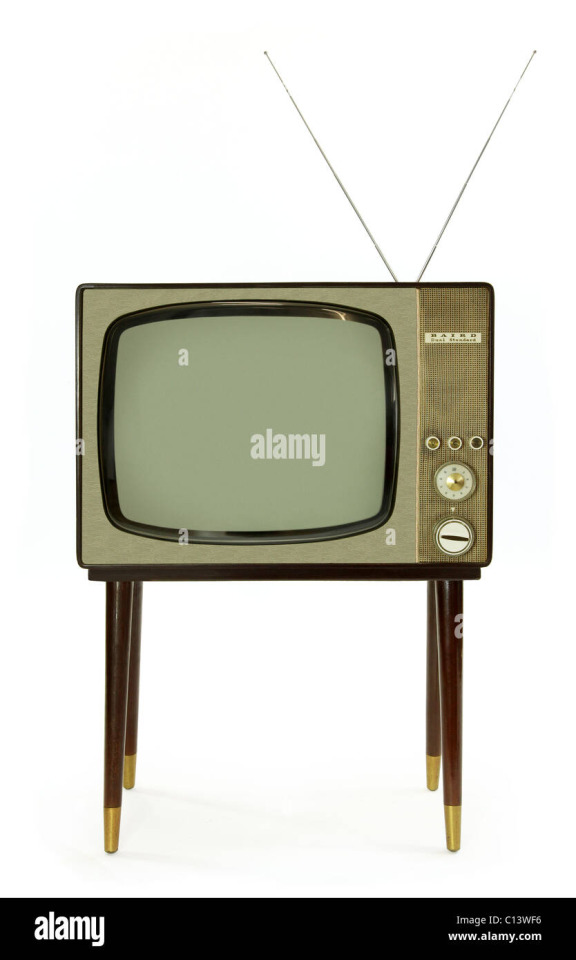
(below) 70s-80s CRT TV: Color TV became more affordable and commonplace.



(below) 90s CRT TV


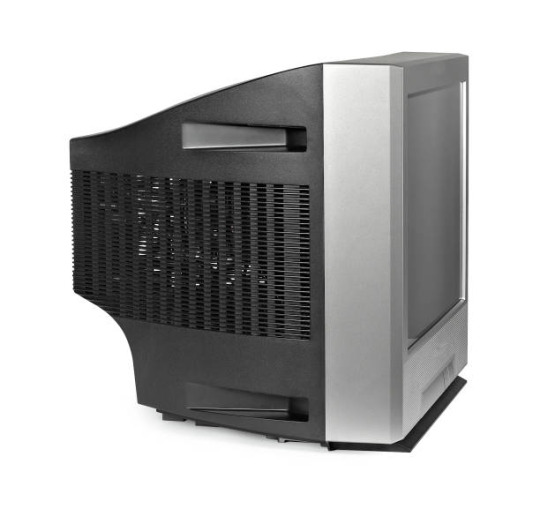
(below) 2000s CRT to Plasma and LCD TVs: The three display technologies competed, but LCD won out in the end. Plasma and early LCD didn't look substantially different. Plasma was a little bulkier, but was still slimmer than CRT.



2010s and on: LCD improved with LED backlighting. But then OLED removed the need for backlighting entirely, which mixed the benefits of plasma and LCD. (Didn't bother to find a picture example. It's so close to modern at this point)
--Display technology-- (These overviews are very simplified)
CRT(Cathode Ray Tube)--Used through the 1900s to approx 2010. Monochromatic until Color TV developed aroung the 1950s. Worked via vacuum tubes and electron gun that lit up the pixels. They were bulky, heavy, and used a whole lot of power. Widely considered obsolete and no longer made. Video games made while these were in use tend to look better in CRT, since the graphics accounted for the image quality.
Flat screens-
PDP (Plasma Display Panel): Used from early 2000s to approx 2015. Used gas cells that light up pixels when electrically charged. Good image quality and good contrast, but expensive, heavy, and used a lot of power. Considered obsolete and no longer made, despite still having a desirable image quality.
Plasma and LCD competed in the 2000s to early 2010s as CRT popularity waned. LCD eventually won out due to weight and overall cost(including market price and energy efficiency).
LCD (Liquid Crystal Display): Introduced for TV around the same time as Plasma. Works via a liquid crystal layer with a backlight. Slim, decent image quality, energy efficient. Viewing angle matters because image colors are warped at wide angles. Cheaper than plasma. There are two main backlighting types:
--CCFL(Cold Cathode Fluorescent Light): Used fluorescent lighting for the backlight. Image quality was decent, but didn't have good contrast. (the blacks were never truly dark because of the backlight)
--LED(Light Emitting Diode): An LCD that uses LEDs instead of CCFL for the backlighting. Better contrast and efficiency than using CCFL.
OLED(Organic LED): Mixes strengths of plasma and LCD. Self emitting LEDs. No backlight or LCD panel needed, which improves contrast(about as good as plasma was, which is why plasma is basically obsolete now).
--QD-OLED(Quantum Dot- OLED) Adds a layer of Quantum dots to an OLED to improve color gamut. I think. I can't let myself fall too far into this rabbit hole, so I'm not double checking anymore.
((Feb 12, 2025-updated tags)
#hazbin hotel#hellaverse#hazbin hotel redesign#hazbin vox#vox#human vox#the vees#heavenbound au#a3 art#fanart#digital art#character sheet
140 notes
·
View notes
Text
[ HoS ] ANCIENT EGYPTIAN AMULETS

The Isis knot is just as iconic as it is mysterious. It is unclear what this knot is meant to represent exactly: some Egyptologists argue it may have been a very ancient form of menstrual pad, while others believe it had religious or decorative purposes."

The Djed Pillar, representing Osiris' spine, is a powerful amulet used by both the living and the dead. Often made from various materials, it is also depicted in Egyptian art with a pair of hands and a feathered crown topped by the sun, symbolizing Osiris and divine resurrection.

The Ancient Egyptians believed the core of our intelligence and mind was the heart, rather than the brain. They couldn’t determine this latter's purpose, so during the mummification process, they discarded it, pulling it out through the nose with a hook, leaving only the essential vital organs to be preserved for the afterlife. In fact, the heart was regarded as both the source of emotions and feelings, and the seat of one's entire being—no wonder it was shaped like a vase!

Even those unfamiliar with Ancient Egyptian art recognize this iconic symbol. Over time, the Ankh, or 'Key of Life,' became synonymous with Egypt itself and its ancient religion. Some Egyptologists suggest that its shape may have been inspired by a knotted cloth, though its use was primarily decorative.
In some murals, strings of Ankh symbols were used to represent water, as it was the ultimate symbol of life for the Egyptians—everything originated from it, making the Ankh a fitting metaphor.
In other depictions, gods are shown 'spoon-feeding' pharaohs and the dead with an Ankh in their hands, symbolizing the soul being revived by the divine as it begins its journey to the afterlife."

One of the most common artifacts found by archaeologists during excavations, the Scarab is an iconic amulet that served many purposes for both the living and the dead.
In life, it was used as a seal, a protective amulet, or simply as jewelry, often worn as a ring or necklace, typically linked to a golden wire. In death, it was frequently placed around the neck and functioned as a protective charm for the heart, earning the name 'heart scarab.'
The scarab was the sacred animal of the god Khepri and symbolized the sun.

For the Ancient Egyptians, the soul was divided into several parts—nine in total, including the physical body. It was crucial that each of these parts made it to the afterlife, allowing the dead to be reborn in the Duat, the Egyptian underworld. The Ba, which represents our unique personality, was often placed on the mummy's chest so it could rest near the heart, another key component of the soul.

In Ancient Egypt, the papyrus stem was a common decorative element. Temple columns were often shaped to resemble this iconic plant. Its frequent appearance in Egyptian art was partly due to its significant color: green, the color of resurrection, sacred to the god Osiris. By placing a papyrus-shaped amulet around a mummy’s neck, the Egyptians believed it would ensure eternal youth for the soul in the afterlife.

The Eye of Horus, modeled after the left eye of the falcon god of kingship, is one of the most iconic symbols of Ancient Egypt. Found in numerous tombs, it was continuously produced from the late Old Kingdom through to the Roman period. It served both as an amulet to ward off evil and as a decoration on boats and mummies. Representing the moon and the righteous nature of the god, it is also closely connected to other benevolent deities, such as Osiris, Thoth, and Ma'at. Tied to the story of Horus's restored eye, it became a symbol of health and healing.

Used exclusively in funerary contexts, this peculiar amulet depicts the index and middle fingers of a right hand, which were believed to 'heal' the incision made by embalmers to remove the mummy’s organs during the mummification process.
94 notes
·
View notes
Text
How the baro't saya / traje de mestiza / terno evolved from the 1860s to the 1960s
– a thread🧵
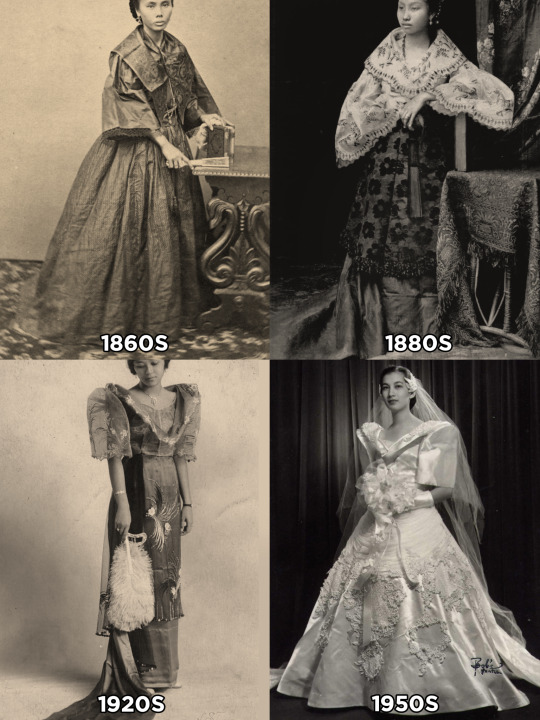

𝟭𝟴𝟲𝟬𝘀: The silhouette of the saya (skirt) mimicked the Western 'cupola' skirt by using multiple layers of petticoats instead of a crinoline to achieve a wide, elliptical shape.
Coarse 'abaca' cloth was also used to reinforce the saya’s hemline and help maintain its structure.
The camisa (blouse) is cut high above the waist.
The pañuelo (fichu) is folded close to the neck, conceals most of the nape, and appears to be pinned at one central point, with the ends separating into two.

𝟭𝟴𝟳𝟬𝘀: The pañuelo and camisa began matching in colors, materials, and embroidery. This was referred to as "ternos bordados" (matching embroderies).
The pañuelo, now ending at one point, is pinned lower at the chest, increasingly revealing more of the neck.
Following the bustle skirt in the West, the gathering of the enaguas (petticoats) shifted to the back of the saya.

𝟭𝟴𝟴𝟬𝘀: Embroidery became more prominent, often contrasting with the base fabric.
Most pañuelos are starched to allow the back portion to stand upright creating a regal appearance.
During this decade, the skirt began to lose volume at the front, with fullness gradually shifting to the back. This transformation resulted in the development of a sweeping train.
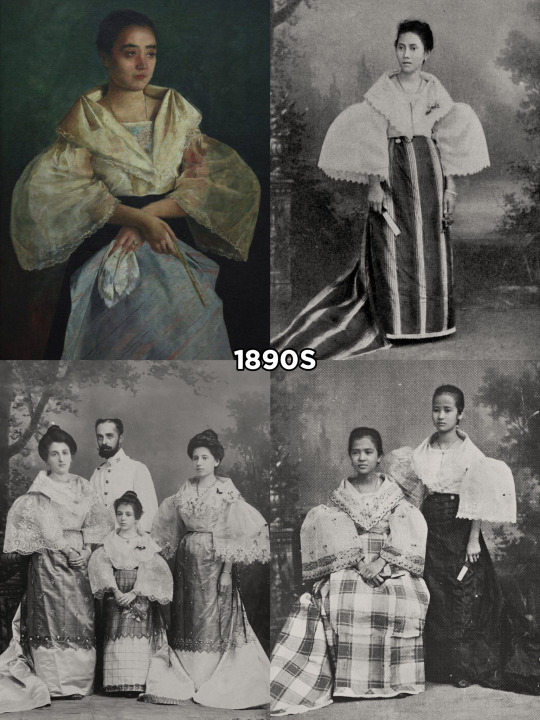
𝟭𝟴𝟵𝟬𝘀: The sleeves of the camisa increased in volume, becoming wider and stiffer, mirroring the leg-of-mutton sleeves in the West.
The seams of the sleeves have dropped by about 2–3 inches from the shoulders.
The pañuelo became more upright with additional folding and starching.
The saya became simpler, following the A-line skirt trend in the West. The back of the saya develops into a train that lengthens through the years, becoming known as the saya de cola (skirt with train).

𝟭𝟵𝟬𝟬𝘀: The sleeves became shorter by 3–4 inches and wider, flaring out from the shoulders to the elbows.
The pañuelo is larger and is folded four times at the edge. creating more stiffness when shaped.
The back of the pañuelo begins to be positioned farther and lower from the neck, gradually revealing more of the nape.
The upper half of the dress appears more top-heavy and voluminous.
By the end of the decade, following the 'Gibson Girl' style in the West, the serpentina skirt became fashionable, often trailing at the back. It dominated fashion until 1915.
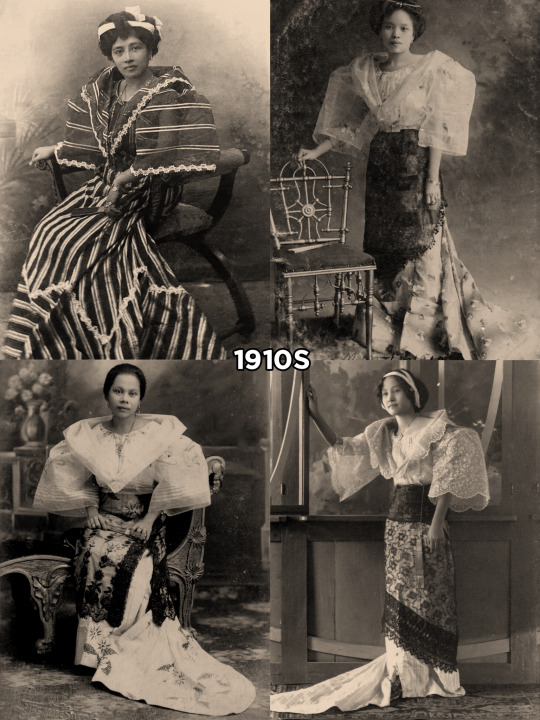
𝟭𝟵𝟭𝟬𝘀: The sleeves and pañuelo grew wider, with the serpentina skirt lasting until mid-decade.
In 1914, the sobrefalda comes into fashion. An overskirt whose length varies from knee to mid-calf, it is typically made of black illusion tulle or lace and embellished with sequins, beads, rhinestones, or embroidery. Worn as an alternative to the tapis, it is also sometimes discarded for less formal occasions.
By the later years, the saya slimmed down, emulating the designs of Paul Poiret and Lucille Lady Duff Gordon.

𝟭𝟵𝟮𝟬𝘀: The terno followed a streamlined sillhouette.
The wide sleeves of the previous decade were shortened and flattened closer to the body, transforming into the iconic "butterfly sleeves".
The pañuelo is more decorative than functional, resembling a lapel rather than a seperate shawl.
The back of the pañuelo is positioned lower, exposing more of the nape.
Variations of the sobrefalda and cola emerge.
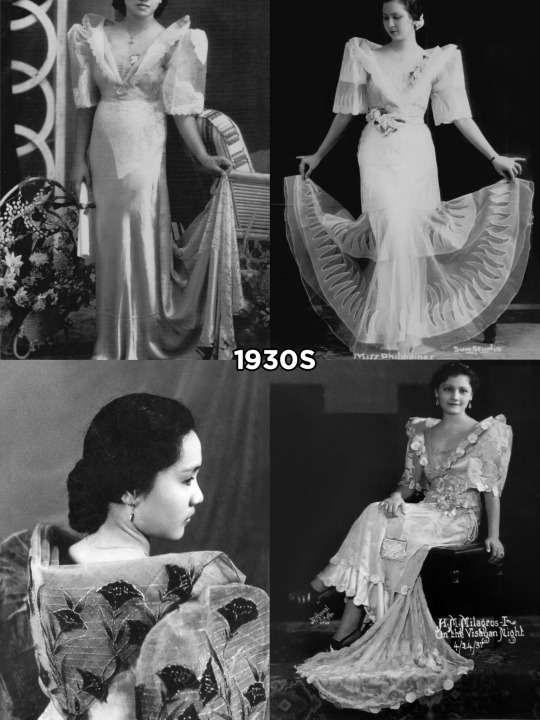
𝟭𝟵𝟯𝟬𝘀: Madeleine Vionnet's 'bias cut' for the saya de cola became fashionable.
The terno appears with the upper and lower parts joined together, fastened at the back using snap fasteners, hooks, and zippers.
With the disappearance of the sobrefalda, decorations such as embroidery, beads, cutwork, and the insertion of lace or other fabrics were applied directly to the saya.
Trains become shorter and eventually disappear close to the end of this decade.
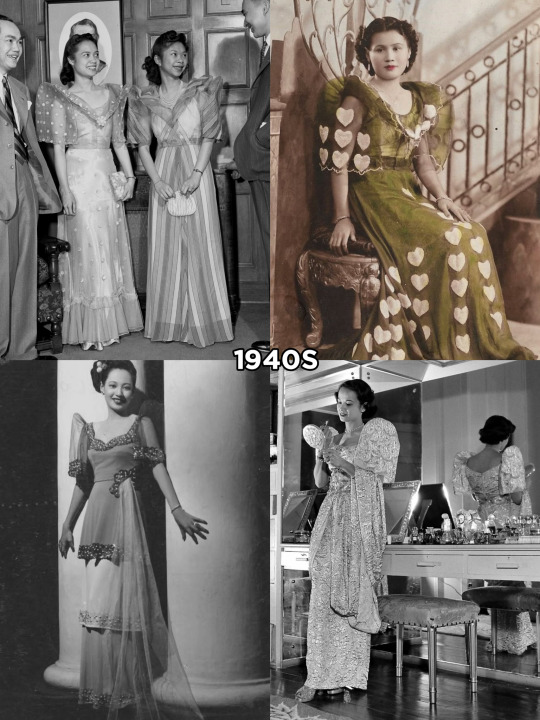
𝟭𝟵𝟰𝟬𝘀: Trainless, flared skirts became the dominant style among Filipinas.
The zipper joined the bodice and skirt of most ternos into one garment.
The pañuelo remains an essential, albeit decorative, component of the terno.
After WW2, it became more common to wear the terno without the pañuelo, and more varied and innovative skirt designs emerged.
The bodice of the camisa gradually becomes opaque and attaches to the skirt, while the 'butterfly sleeves' retain their structure and sheerness.
----------------------------------------------------
HELLO!! Thank you for reading this thread!! Unfortunately, due to tumblr's photo limit, this thread will only go up to the 1940s. I'll make another post for the 1950s and 60s. Most of the info in this thread are from the book "Fashionable Filipinas" highly recommend to read! They also have an ig page so please check them out! Another source I used are the three-part lecture series by NCCA PCEP explaining the history of how the traditional Filipina dress came to be, starting from the pre-colonial period all the way to the country's independence after World War II, available on youtube!!. Again thank you for reading!! I hope all of you enjoyed it!!
#thread#philippines#filipino#filipinoclothing#traditional filipino clothing#filipino fashion#Spanish era#1870s#filipino terno#barotsaya#fashion#culture#traje de mestiza#filipino culture#American Era#southeast asia#vintage dress#victorian era#edwardian era#gibson girl#1860s#1880s#1890s#1900s#1910s#1920s#1930s#1940s#1950s#1960s
27 notes
·
View notes
Text
More VAT7K brain blerps – Hugo’s prosthetic limb Continued
I didn’t realize how much others like prosthetic limbed Hugo, so now I’m more excited to share my other ideas on it. Thanks for the validation y’all.
After the fiasco with the thugs and Varian finds out about Hugo’s artificial limb, the alchemist is on the same curiosity level as Yong, wanting to know more about Hugo’s alterations to it. Hugo spends an entire evening talking to the two as they sit by the campfire, answering their questions on the materials he’s used, his own schematics, and each component in his prosthesis. He enjoys displaying the fruits of his labor and uses his invention to get the two’s interest and trust in him. The talk goes on late into the night and while Yong eventually ends up falling asleep, Varian stays up longer, fixated and impressed by Hugo’s work. At some point, Hugo removes the limb from his body when Varian asks to get a better look. Normally, he would just let a person get close to him to see, but when Varian leans in toward him, the closeness sends a wave of nervousness and awkwardness through his body.
Thinking quickly, he moves away to get a better angle to unlatch the device, not certain why he felt self-conscious earlier.
Just make sure you give it back, alright, Goggles? He jokes as he removes it. Varian gently takes it into his hands and gets a closer look at the internal interlockings. As he does, Hugo goes back to boasting about his work. Impressive, right? Much better than the usual peg or hook you’ll see on others. It’s fully functional while still serving as a work of art.
Instead of rolling his eyes at Hugo or scoffing at his prideful demeanor, Varian nods, agreeing with the blonde. It’s beautiful.
Hugo is taken aback by the compliment and feels his ears burn as he realizes that Varian just called a part of his body beautiful. At that moment, Hugo is grateful that Varian is too immersed in the prosthesis to see him blushing.

During their travels, Yong asks Hugo why he keeps his limb hidden under his clothing. If I had something that cool, I’d show it off.
I don’t think people other than nerds like you two think it’s cool Hugo explains. Plus, it’s easier to get around without attracting attention.
Truthfully, Hugo hates the look of pity strangers give him when they find out he has a fake limb. Even before he got his prosthesis, he learned how to get around and function well without his arm/leg so it nerves him to be seen as something less because of it. Therefore, he keeps it hidden to avoid those looks and be treated no differently than any other person. Seeing Yong and Varian react so positively compared to the usual spiel was both refreshing and appreciated. The two never treat him like he’s incapable of handling himself, even when he can be reckless.
Sometimes Yong forgets about Hugo’s prosthesis or forgets which limb is artificial. The kid will mistakenly high five Hugos metal arm way too hard and hurt his own hand. Or, Yong accidentally drops something heavy on Hugo’s fake foot and apologizes.
I’m so sorry Hugo! Are you hurt?
I’m in terrible pain, Sparks he answers in a monotone voice. I think I lost feeling in my toes. We may need to amputate.
Once Hugo’s more comfortable making jokes with Varian and Yong, the two end up dealing with his morbid sense of humor.
Yong will wish him good luck and tell him to break a leg.
To which Hugo will respond with I'm already ahead of you!
He also definitely pulls this move on Varian when the alchemist asks him to lend a hand.
It’s amusing the first few times, but by the fourth, Varian has to control himself from not throwing the prosthesis back at him.
He gets back at Hugo with this joke eventually. One day, Varian asks Hugo for help and the engineer tosses his arm to him as predicted. Without missing a beat, Varian takes Hugo’s mechanical arm and uses it like one of these bad boys:

To retrieve a book from a high shelf. Hugo is left both insulted and bested.
Give me that! You know what, Goggles? You just lost your Hugo arm privilege. He chastises Varian, who looks rather pleased with himself. He snatches back his prosthesis with the book still in its grasp. So insensitive! Why I’d never!
Brain Blerp part 1
Brain Blerp part 3
#tosses prosthetic limb Hugo ideas out to Tumblr like I'm an old lady feeding breadcrumbs to birds#there's a lot of interesting scenarios i can see with either or#if y'all like this I'll post more little bits and scenes#vat7k#varian#hugo vat7k#varigo#varian and the seven kingdoms#tts varian#varian and the 7 kingdoms#tangled the series#hugo rottewange#varian vat7k#yong vat7k#vat7k fanfic#brain blerp#prosthetic Hugo#also heres a little varigo for the shippers#I'm still unsure whether Hugo's prosthesis would be his arm or leg
81 notes
·
View notes
Text

The Yin and Yang of Engineering: Jinx/Viktor

Chap. 1: Tinkering with the absurd.
The scent of scorching metal and candle wax lingered in the air, mingling with the residual ozone of active Hextech. The laboratory existing as an ecosystem of its own — a microcosm of calculated order, in which every movement was rigorously orchestrated, every instrument meticulously placed, every breath synchronized to the steady hum of interconnected machinery. The crisp scratch of graphite against parchment, the measured clink of tools — the usual praxis. Something, however, had already begun to disrupt its equilibrium.
Viktor sensed the disturbance before he saw it. A minute displacement in the air pressure, a fractional shift in the ambient acoustics; the subtlest irregularity. Then, the faintest creak from above.
He let his fingers continue their measured course along the Hextech circuitry before him, grip steady, focus ostensibly unscathed. A test, in part—to see how long the anomaly would linger before announcing itself.
He had already detected the pair of pendulous blue braids dangling into his peripheral vision; had already cataloged mass, velocity, and descent trajectories should the anomaly, as anomalies often do, spiral into a paroxysm of unpredictability.
"You look very ugly from this angle, y'know?" came the snickering, upside-down voice. The words were laced with a gummy, lopsided grin.
Viktor let out a stolid, measured exhale, slowly tipping his head up. “And you resemble a bat.” he replied evenly, tone as measured as his calibrations.
The statement elicited a gnarly laugh from Jinx, who was suspended from an overhead beam. Her entire body was folded into an improbable pose, legs hooked over the steel girder as though gravity were merely a suggestion.
The neon glow of Zaun’s skyline bled in through the lab windows, casting fragmented light over the contours of her rounded features, the faint smudge of soot dusting her jawline, the subtle asymmetry of her pupils—one slightly more dilated than the other. A tell, perhaps.
Viktor merely adjusted a stabilizer. “Should I begin to question how you got up there?��
Jinx twisted midair with a surprising economy of movement. The vertebral rotation was precise, controlled—almost acrobatic.
Then, without warning, she let go. Viktor tensed, a reflexive tightening of his grip on the edge of the workbench. The poor scientist had already begun to map trajectories, force differentials, probabilities of injury, only for the jinx to land in a perfect crouch, one hand brushing the floor for balance before springing up with the fluidity of a creature built for unpredictability.
Jinx twirled once, for no discernible reason other than self-amusement, then flopped onto one of his worktables, her limbs sprawling on the surface with careless abandon.
“So, Doc?” Jinx drawled, tilting her head toward the intricate lattice of Hextech components strewn before him. “whatcha cooking up in that fancy contraption of yours?”
"A minor enhancement,” he answered, gesturing at the faintly pulsating gemstone embedded in the device. “One that may stabilize Hextech output during large power draws. We—” he hesitated, momentarily considering whether to lump himself in with Piltover’s more refined approach "—some of us forget how violent these energies can be when not properly harnessed.”
“Violent energies, violent minds,” she mused, referring to his earlier statement, while patting down the dust on her patchwork trousers. “Nothing a little disorder can't fix.”
“Entropy requires boundaries,” Viktor corrected, keeping his voice gentle despite the admonition. “A container. Else it consumes itself and everything around it.”
"Alright, philosopher," she snickered, "so, what you're telling me is 'no boom'?"
“Absolutely not. No utility whatsoever in explosions."
Jinx's ebullient expression dropped to a saturnine one. “Boring,” she huffed, scrunching her nose. “why are you like this?”
“Functionality,” Viktor returned evenly, “is not contingent on spectacle.”
“Roger that.” she sneered. Jinx twisted at the waist, swinging gently like a pendulum.
She peered at him through the electric haze, turning a small metal sphere over in her hand—one of her bombs, he surmised, judging by the labyrinth of tiny, improvised coils etched along its surface. It was disarmingly compact, unpolished, but brimming with haphazard brilliance. There was artistry in its asymmetry, like a half-remembered blueprint from a dream.
She pressed the sphere into his palm. “Try to make this stable now, yeah?” her tone brimming with the same sardonic twang she always carried. Yet beneath that, a flicker of sincerity: an invitation to test the boundaries she had set.
Viktor’s metal brace squeaked softly as he shifted his weight, accepting the device with steady composure, analyzing the craft with composed fascination. “I am usually up for a challenge,” he replied, a faint thread of wry humor lacing his tone. “However… I must insist you not hang from my rafters again without warning. The structural integrity—”
“Yeah, yeah," she immediately interrupted him, snorting, "... deal."
Viktor set the bomb gently on the worktable and glanced at her. In the silent seconds that followed, there was no condescending tut-tut of a Piltover academic, no sanctimonious lecture of what she could have done better. Merely an unspoken accord that if they could each appreciate the other’s mania—and keep its calamitous potential in check—there was something worth building there.
He adjusted a delicate filament, the faintest suggestion of amusement sparking behind his amber eyes. “You mistake methodology for rigidity,” he randomly mused, glancing sidelong at Jinx.
Her nose wrinkled again, waiting for him to elaborate.
He rolled his wrist as he set a filament connector. “A scientist does not calculate every step merely to banish unpredictability. Calculation is comprehension—to understand a system so deeply that you know precisely where to push and when to pull. Not to prevent chaos,” he added, letting the final phrase hang, “but to direct it.”
Her lids flickered in hesitant acknowledgment; skepticism warred with fascination in her mismatched gaze. “So what you’re saying,” she pressed, “is that you do like messing with things, you quaint, boring guy.”
A soft hum escaped Viktor’s throat, ignoring the insults. “The core of invention is not the mere desire for control, but curiosity,” he continued. “The difference,” he said mildly, “is that I prefer my experiments remain intact by the end of it.”
She slid off the table and prowled around the lab, trailing her fingers over metal and wire, rifling through blueprints.
Jinx moved like she thought in tangents: erratic. Nonlinear. Pausing here, skipping entire sections there, only to circle back if something caught her eye again, in what one could call a stochastic, staccato fashion.
Viktor, wisely, did not intervene. He had long since learned that when it came to Jinx, indirect engagement was often a more effective deterrent than forbiddance.
Eventually, she plopped herself down at a workbench—one cluttered with Viktor and Jayce’s shared diagrams—scrunching them aside with a careless sweep of her forearm. Surprisingly, she took pains not to knock them to the floor or tear them. An almost incongruous note of consideration from someone so prone to what Viktor could only describe as deliberate rascality.
Jinx stretched until a series of pops echoed through the quiet workshop, then rummaged in her satchel. Out came the neon-splashed paraphernalia she called her toolkit: coil springs, nuts and bolts of questionable origin, and—of course—her beloved spray cans in garish, candy-colored hues. The stark contrast against Viktor’s methodical array of polished metal components was almost comical.
Yet neither commented on it. Viktor, engrossed in refining a fractal array for stabilizing Hextech surges, offered only the occasional sideward glance. Jinx, with her usual lack of ceremony, fished out a crude welding torch and got to work assembling... something. If the shape seemed headed toward destructive potential, Viktor refrained from remark—he had long discovered that sharing space with her was a delicate dance better navigated by trusting in her ad-hoc, if not entirely safe, sense of boundaries.
Hours passed in near silence. In place of conversation was the rhythmic hum of the lab, the hiss of flux as Viktor soldered circuit boards, the faint crackle of Jinx’s blowtorch. Occasionally, Jinx broke the hush with a sudden whoop or guttural holler, purely to see Viktor jump at the unexpected noise. Each time, she dissolved into snickering laughter. He responded with measured exasperation, arching one brow but saying nothing. Even so, a trace of bemusement flickered across his features, as though he found her antics strangely disarming.
Eventually, the overhead lamps dimmed, a subtle reminder that the hour was growing late. Viktor powered down his apparatus with a final flip of a switch. Jinx, yawning in an exaggerated manner, began stowing her things in a scuffed leather pouch. "Think 'm headin' out now. Night night."
"Night."
The woman had already crept back up with the grace of a nimble rat, scaling the ceiling pipes, her long electric blue braids once more dangling upon Viktor's forehead as he scarcely managed to push them aside. She then made her way to the same improbable entryway through which she had crashed into the lab, quietly humming an off-key tune before vanishing into the sooty shadows beyond.
Viktor, by contrast, had continued his work undisturbed, denying himself even the basic luxury of sleep. When his eyelids finally began to grow heavy and he awoke from a brief micro-slumber, elbows unceremoniously propped on the workbench, he caught, in a dazed haze, the blurred image of a bizarre object with distinct animalistic contours, stationed before him as though it were unnervingly staring at him.
Instinctively, he flinched, covering his head as if to brace himself for the expected detonation which, surprisingly, never came.
The odd bitzer remained still, with no sign of malevolent nature, glimmering quietly under the workshop’s neon gloom — a squat, mechanical monkey-like figure sporting metallic plating with a grotesque smile and an odd coil in its belly.
Viktor raised a brow as he took note of the small sprig attached to its left hand, that held the monkey's weight into an erect position while seemingly mimicking the scientist's own ligneous cane. His attention was then captured by the bright yellow post-it affixed to the metallic ape with a messy bit of tape, scribbled in a deliberately sloppy handwriting:
“name's cookie... he looks like you. yuo can keep it :o)
– J”
Beneath it, a wonky smiley face scrawled in lurid neon ink, as asymmetrical as its creator’s grin.
It elicited a smile from him, who examined it as it rested upon his palm. Albeit a bit rough in its form, the artefact appeared to be crafted with a certain intent, perhaps even care. He pressed a button to test the mechanism, still half-expecting an explosive cacophony. The monkey’s tiny arms flailed in a spasmodic dance, beginning to tremble as if preceding detonation, only to splutter out a few confetti which landed on his ivory jacket. Viktor shook his head, his expression softening to one of amusement.
He let his index carefully trail over its metal plating, before placing it on his workbench beside the half-finished stabilizer, the neon-paint smudges glaring against the refined Hextech casing. For all the incongruity, there was something undeniably… charming about it. Perhaps endearing even. He'd later hang it up in a corner of the lab, a testament to the newfound, improbable synergy.
For the first time since Jayce's abandonment of the lab in pursuit of his councilor duties, Viktor perceived a vague sense of vacancy following the disappearance of Jinx and her shenaningans, which alongside his exhaustion finally prompted him to call it a day and go home, an unfortunately rare occurrence for the inventor.
In truth, this measured respect and fascination had begun well before Jinx’s impromptu acrobatics in Viktor’s laboratory — it had taken root, ironically, in moments where they’d never even met face-to-face.
Viktor recalled being urgently presented with the disarrayed collection of fuliginous, hazardous mechanical constructs—agglomerations of metallic scraps, remnants of gunpowder cartridges, and nearly comical embellishments of dubious taste, alarmingly rumored to have derived from Silco's inner circle.
"The configuration is... rough, though there certainly is a certain knowledge of engineering, if not mere intuition." Viktor mused, carefully examining the device's labyrinthine wiring and ingeniously modified spark fuses of the complex apparatus beneath him.
"Would they be capable of figuring Hextech out?" Jayce wondered aloud, his steps resonating an anxious rhythm across the chamber's floor.
"Eh," Viktor hummed pensively, "I wouldn't exclude it. The possibility does exist."
"With a complete lack of the theoretical basis? No, no. Years of research and tests only for some... sick, delinquent mind to comprehend and emulate so effortlessly? No chance." he quickly retorted, the firm incredulity in his voice coming across as an attempt at self-regulation rather than genuine conviction. "This is merely a... well-thought attempt at scare tactics. To intimidate us into allowing independency."
"The absence of formal theory, or proper equipment, only serves to underscore the inventive potential of such mechanical artistry." Viktor countered, "If only such acumen could be channeled towards something more... constructive." he then mused, lithe fingers delicately twiddling with the disassembled filaments beneath him.
"Potential? Viktor, this is sheer madness. These are seeds of entropy threatening to contaminate the flourishing utopia that is Piltover. I can not tolerate nor allow this, and may be obliged to..." he paused, simultaneously recalling Medarda's words and anticipating the partner's disapproval, "take countermeasures."
The statement did, in fact, earn a mild glare from Viktor, who was intently scanning the device's subversive wiring.
"If I recall correctly, weren't Hexgems, too, violently volatile in their raw form?" Viktor extended his arm, the servos in his brace whirring faintly as he aligned the titanium-tipped cutters with the wire he had deduced to be the linchpin of the circuitry,
"Volatility is often the embyron of great potential," he continued, finally neutralizing the bomb, "the only requirement being the correct catalyst to refine and stabilize its essence."
#arcane#viktor arcane#jinx arcane#viktor x jinx#jinx x viktor#jinxtor#rarepair#there are so many parallelisms..#two sides of the same coin#perhaps#they are both insane engineers#from zaun#gasp!
25 notes
·
View notes
Text



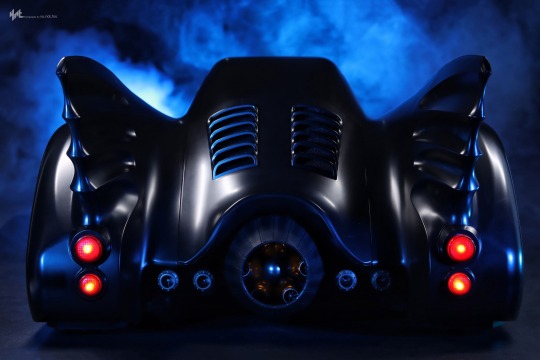

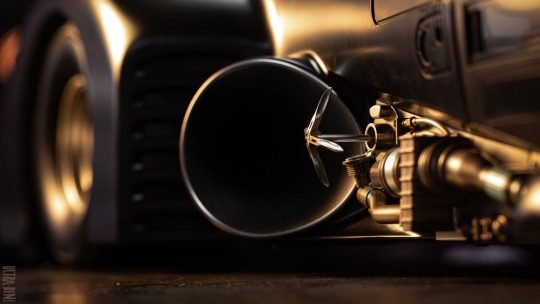
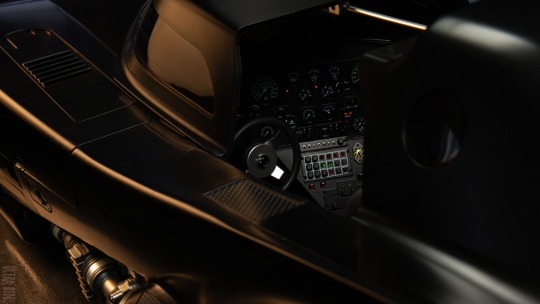

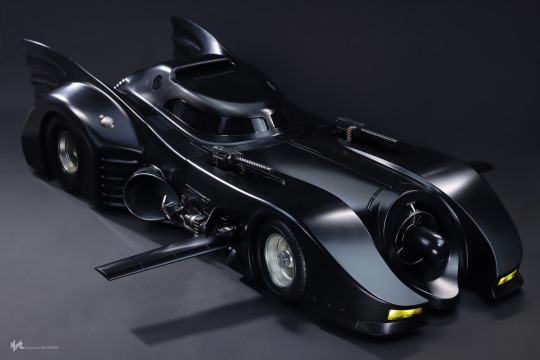

Batman (1989) - 1/6th scale Batmobile Collectible by Hot Toys
The Batmobile is Batman’s primary mode of transportation, also one of the most daunting components in his vast arsenal, keeping it stored in the Batcave when not in use. Now Hot Toys is thrilled to unveil the stunning blogger photos of this legendary ride as 1/6th scale Batmobile Collectible from the Batman (1989) collection.
The screen-accurate Batmobile measures approximately 100cm is fully designed to capture the mechanical design and painting bringing the remarkable Bat vehicle to reality. Features an incredible amount of details such as the slide-open canopy door; head and taillights, jet engine and dashboard panel with LED light up function; rotatable wheels; gadgets including the side-mounted batdisc launchers, machine guns, grappling hooks and shinbreakers, and a rotary base to recreate scene in the Batcave.
95 notes
·
View notes
Text
#tutorial#shorts#react#react developer#state vs props#props#State#Stateless components#Stateful Components#class components#functional component#hooks#life cycle methods#Components#JSX (JavaScript XML)#Props#Component Lifecycle#Functional Components and Hooks#React Router#State Management#Conditional Rendering#Lists and Keys#Forms and Controlled Components#Component Composition#Styling#Error Handling#Testing#Performance Optimization#React DevTools
0 notes
Text
Incels are autistic and I'm tired of pretending otherwise
Prevalence (of autism) among incels
A poll on incels.co with 666 responses found that 40% believed ‘autism or similar conditions’ were a factor that ‘significantly prevented them from finding a partner’.
A study by Moskalenko et al. surveying 274 self-identified incels found an autism diagnosis rate of 18%, rising to 74% when including self-reported autism. Another with a sample of 54 found a diagnosis rate of 32%, rising to 53% with self-reports.
Speckhard & Ellenberg found among 272 incels a diagnosis rate of 18%, with 44% ‘reporting autism symptoms’.
Whittaker et al. administered the AQ-10 (Autism Quotient) questionnaire to 561 self-identified incels, finding that 31% met the threshold for an autism evaluation referral.
Incels mass killers
Elliot Rodger: diagnosed of Asperger Syndrome and PDD-NOS
Chris Harper-Mercer: diagnosed of Asperger Syndrome
Alek Minassian: diagnosed of Asperger Syndrome
Jake Davison: diagnosed of Autism
The romantic and sexual lifes of autistic people
Stoddart et al. (2013) gathered data on 480 individuals with autism (72.5% male; mean age = 29.1). 50.8% were higher-functioning, 23.8% ‘had autism’, 15.6% had PDD-NOS, and 14.8% had an intellectual disability. 415 (86.5%) were single, 43 (9%) were married, 11 (2.3%) were separated or divorced, and 10 (2%) were living common-law. 32.1% had been in a romantic or intimate relationship in the past. 10% had biological children.
Barneveld & Swaab (2014) compared the outcomes of 162 high-functioning autistic participants (83.4% male; mean age = 23.7) with subjects diagnosed with other conditions in childhood. 88% of autistic subjects were single, which was significantly more than those in the ADHD, disruptive behaviour, and affective disorders groups.
Helles et al. (2016) studied 50 adults (mean age = 30) diagnosed with Asperger’s as children. 48% had never been in a relationship, 22% were currently single but previously had a partner, 16% were partnered but non-cohabiting, and 14% were married or cohabiting. There was a negative relationship between relationship status and autism symptom severity (r = –.42). In a study by Strunz et al. (2017), 229 high-functioning autistic participants (40% male; mean age = 35) completed a number of questionnaires relating to relationships. 37% of the men and 48% of the women were currently in a relationship. A significant gender difference was observed whereby more men (38%) had no relationship experience relative to women (21%).
Relationships, social life and autism
Most romantic relationships themselves begin as friendships. Limited social experience may further compound the challenge, as peer socialization is regarded as a vital component of social development. One study found that 53% of the variance in the romantic functioning of the autistic sample was explained by their level of social functioning.
Many autistic individuals seem to embody the opposite of ‘the life of the party’—the buzzkill, the rizz vacuum, the low-energy downer. They are often perceived as affectively flat and unresponsive, which is a problem when a near-constant display of positive expressivity and enthusiasm is expected to keep people satisfied.
Another factor to consider is how it's easier than ever to retreat into a virtual existence. Autism and autistic traits are associated with internet and gaming addiction, providing structured and predictable environments free from the stress and chaos of real world socialization. The internet allows autistic people to stay within their comfort zones, becoming excessively immersed in their ‘special interests’ and turning to online friendships and pornography as substitutes for ‘the real thing’.
Non-diagnosed ones are not safe
A final point worth mentioning is that those who fall short of a clinical diagnosis aren’t necessarily off the hook. Autistic traits exist on a continuum, so the relevance of this information extends beyond a relatively small segment of the population.
14 notes
·
View notes
Text
20dollarlolita pattern school step 3) prep and pattern selection.
NOTE: Here's a link to the pattern school discord. If this link has expired, please message me off-anon and I can send you one. I like to get to know everyone in the pattern school and so I don't let too many people in at once, so that I don't get overwhelmed.
So quick summary of where we were: Pattern School is a project that I'm working on in this blog, and that has an accompanying Discord server. The purpose of Pattern School is to teach people, though hands-on experience, the consistent conventions that sewing patterns use. It also teaches basics about how to transform patterns into designs that do what you want them to do. Pattern School is divided up into steps. Each step builds on the skills of the previous one, and each one teaches new elements.
Here's the pattern school tag, in chronological order.
In step 1, everyone follows a commercial pattern with notches, grainlines, and written instructions. This pattern is for something that is not fitted to a human body/is not multi-sized. In this step, we make sure that everyone has a basic foundation understanding of how commercial patterns are made. We choose a non-fitted item so that selecting the correct fit and adjusting for body shape is not necessary. If the student wishes, an additional challenge for step 1 will be to look at a pattern, see if it's usable in lolita fashion, and make good fabric and trim selections to make a usable lolita item.
In step 2, we take a pattern for pajama pants and use it to create bloomers. This step introduces the basics of pattern manipulation. We go into how to remove seam allowance, measure ourselves for fullness, and assemble a garment from a modified pattern. Once again, there is a challenge of choosing good trim and fabric options to build a usable lolita garment.
In step 3, we will be making a lolita or lolita-adjacent garment for ourselves. This garment will be a fitted item, and it will have a closure. What's a closure? Closures are something that opens and closes to allow the wearer to get in and out of the garment. Closures can be zippers, button plackets, hooks and eyes, IDK freaking magnets or something, if you want to put velcro as a closure then more power to ya, but your garment needs to have some kind of closure. I've made resources for how to put in zippers, but other closures are probably also acceptable. Pullover elastic is not a closure. We are making a garment for ourselves because it's a lot easier to make a fitted garment when you have the body you're using right there with you at all times. If you are always with another human being while you sew, you could probably use them, but the critical component is that you have the body accessible to you all the time.
This time, the challenge is also to make something that either can be part of your lolita wardrobe, or that forces you to choose and style something that has a lot of lolita fashion aesthetics. If you want to pick a lolita-adjacent concept, like Aristocrat or Fairy Kei, you're probably fine? If you're doing this on your own, the person who decides if you're cheating is you. If you're in the Discord, you can ask if something's acceptable and like 15 people will disagree with it before tagging me and then I make up an answer on the spot. I firmly belive that Ouji is just lolita with pants and doesn't need to be stated separately.
I previously made a very long list of garments that you can make EGL fashion with, but it's older and some of the patterns are out of print. So, here's a few hours of me going through the big 4 pattern website and finding stuff that has potential.
Dresses:

Left | Center | Right
So quick note: my image editing software kept refusing to function with images off simplicity.com, so we're going to alternate between funky screenshots and semi-competent images. I'm not sorry.

Left | Center | Right
Any time you're making a lolita dress from an existing dress pattern, you'll need to check that the skirt will hold our petticoats. Frankly, most of them don't. You've done the bloomer step, so you do have experience with this kind of modification, but I'll do a tutorial later about checking this and drafting your own skirt onto an existing bodice. For step 3, doing a commercial pattern for the bodice and then following a web tutorial for the skirt totally counts. What we're looking for in a dress pattern is the ability to mod it into a working lolita dress. Please note that Simplicity 8444 (the pirated-but-not-pirate lolita dress) and Simplicity s9735 (the “why'd you use Derpy-chan??”) dresses are not eligible for Step 3, as they are both elastic pullovers.


Top Left | Top Center | Top Right Bottom Left | Bottom Right
Blouses: However, Simplicity 8444 and s9735 both have blouses that work for step 3. If you want to build the JSK on your own and then follow the blouse pattern for step 3, you're good.
The McCall Titanic looking thing is a really fun blouse to make for this, and it's got a back zipper, so if you're not confident in your button-sewing then it's a good option.
Any button-up that goes all the way to the neck has some lolita potential. M8463 is actually pretty loliable on its own.

Top Left | Top Center | Top Right Bottom Left | Bottom Right
Vests are easy to make, don't take a lot of fabric (so you can use some really fancy fabric and have it not break the bank). You're going to have to find a good reference image for lolita but they're really good for ouji and aristocrat, so they get a category.

Top Left | Top Right Bottom Left | Bottom Right
I've just always wanted to make my own lolita coat so they get a category. Once again, you're going to need to double check that the flare fits your skirts.
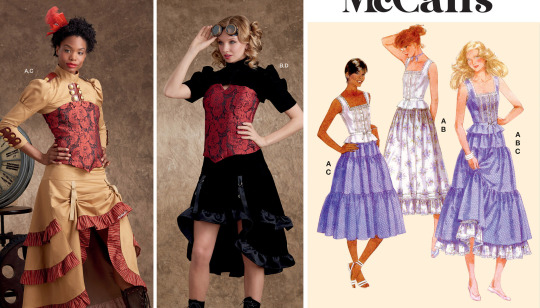
Left | Right
Welcome to the weird shit category. There's a costume shop near me that sells these funky bolero steampunk things and I've always wanted to put it in a coord, so it's on here. The other one is a top that you could probably use as the top half of a JSK, so if you want to make a coordinating skirt then you could have some fun separates. I think handmade lolita needs more coordinating separates. They're a real thing but I want them to be more common.
So that's in no way a complete collection of patterns you can use, but I hope that's got some kind of inspiration about pattern. My test garment was made off an etsy pattern. There's plenty of other patterns out there. This was just the fastest way for me to showcase some patterns that do work.
We'll do a little more about looking at style lines and finding how to understand this a little better in the future, but for now here we are.
63 notes
·
View notes
Text
The Common Language(TM)
Saw a post trying to explain how Common (a... common language) exists in fantasy settings and (I assume) DnD. I personally disagreed with OP's interpretations as they funneled explanations into two camps:
-Humans are so imperialist they made everyone else speak it (a travesty to act like humans are the center of the universe again)
-All languages form Common out of trade necessity, BUT the words contributed retreat into fantasy stereotypes (orcs are warriors, elves are artisan waifs, etc.). Which, IDK guys, at best it comes across as over-explaining US English with extra steps and baggage.
Now personally, I treat languages in my own campaign as mostly geological*- because I'm running a campaign, not writing a book/wiki/conlang.
*A few languages are bound to their speakers simply because they don't have humanoid mouths, eg: Primordial is spoken by Elementals, AKA sentient elements, etc.
Naturally, this led to wondering how the existence of Common could be a larger feature that could be interacted with. While conlangs can be fun, they are often treated as fossils when players probably prefer to walk among dinosaurs.
Note: This is written through the lens of DnD/a fantasy TTRPG, but it could probably function elsewhere with mindful tweaks., build according to your preferences.
In this scenario, all cultural languages exist, but a reverse tower of babel situation occurred. So now the world has a large magical tower that gifts all sentient humanoids (PCs/NPCs) with Common.
For World Flavor:
The immediate obvious possibility is that several nations/peoples agreed to collaborate on this, it's up to you if any individuals are named. But since it was so long ago, that might be lost to time. Or maybe it was recently completed! Regardless, is the tower a Wonder that is communally protected or does this responsibility fall on a certain group?
Or is the Tower Divine? A gift from a god of language, a god of peace or something else entirely (a god of venom who wanted to afford all mortals the ability to hurt each other with words, etc.)? If it is divine, what is the story that explains it? Is there a faith that worships the Tower (and its god)? How do people who may dislike this god reconcile the benefits of the Tower with their distaste for the deity?
Or is it an (inter)national archaeological mystery that is currently being studied? What has been hindering progress? Is it people (who has right over this) or something more otherworldly (supernatural defenses)?
Or maybe it really is just a funny little quirk of the world- a team of wizards bestowed the world with a lingua franca for an easier conference since they don't have time to learn other languages, back to other stuff!
For Conflicts/Hooks:
Is it housed in the current world's seat of power (or was a superpower built around it)? Is this fact used as a Divine Right to be an Authority over others?
Are new words added? Does this affect magic with Verbal Components? Is this how the world's spells are created? Are expeditions sent into the Tower to attempt to add more spells? Have magical words (spells) been lost (or removed)? Does this mean the Tower is ALSO the world's seat of magic?
Can Mundane words be lost? Does this somehow erase *all* instances of this written word? Or does it remove their inherent meaning and Essence (eg: if the word Sweet was lost, would all things cease to be sweet or would sweetness slowly bleed out of the world as sweet and its synonyms are eroded? How would the remaining languages try to preserve this concept in reaction to the Tower?
Was this word loss an accident or intentional?
Is this aspect abused? Is/has it been used as a political weapon/threat? How does exterior damage to the tower, if it can suffer any, affect the language it actively imbues in people? Or does it merely impact how effective its power is?
Or is the Tower decaying and there is a lingual epidemic where communication is collapsing in places that have become overly reliant on the Common provided by the Tower? What do attempts to fix the Tower look like? If the Tower is Divine in origin, how do the pious interpret this development (a test, malice from another god, etc)?
Is a lack of Common in a person used as a pretense to do harm to them? Is it used as 'evidence' to strip them of rights/dignit? Or is speaking Common a litmus for adulthood (eg: babies babble, adults converse, etc.)? How does this belief affect Mute or Deaf people?
Are there people that believe in the superiority of a Cultural Language (since they equate effort to value and Common requires 'no effort')? Are there people that consider Common to be a mark of a lack of intelligence?
Is there an effective range to the Tower? Is there a material or other phenomena that interferes with the Tower's effect on people? How would the PCs react to suddenly being unable to speak Common within their own party for a scenario?
How would anyone react if mundane livestock suddenly spoke? What if fields of plants started screaming?
Would anyone seek a way to sever the tower's influence from themselves (or others)? If the Tower can magically/divinely influence people with the ability to use Common, what else can it do? Would someone ever seek to alter this aspect of the Tower? Could they use it to continuously, universally emit healing? What about silence? (Is the Tower simply automatically converting all words to Common, effectively robbing all the intricacies of natural cultural languages?)
Would there be a reason to destroy this tower? Who would benefit from it (culturally/politically/etc.)? How would the world be changed if it was suddenly destroyed? Who would attempt to fix it? Could it even be fixed?
For Mechanics:
Some challenge uses have already been suggested above with Common Language and/or Verbal Magic dead zones.
But more cut and dry mechanics could tie to how Silence, Comprehend Languages and other linguistically-tied spells tap into/invoke the Tower and even require a nonstandard component.
Additionally, maybe this is where the Power Words (Kill, Heal, Stun, etc.) originated from and can only be found there- and what if there are more?
If you wanted to get cheeky you could probably attribute other word/language spells (Healing Word, etc.) to the Tower, but every table is different.
Hopefully this inspires some fun at the table. Or if you're already running a campaign, you can downsize this effect to a dungeon/wizard's tower/town.
This idea is of course free for use, and if you do use it, please share your story of how it played out! Have fun o/
#dnd#d&d#dungeons and dragons#fantasy writing#fantasy language#fantasy worldbuilding#dungeon master ideas#long post#blankd rambles
251 notes
·
View notes
Text
How a Computer Works - Part 3 (Miniaturization and Standardization)
For anyone just joining in, I'm writing a series of posts explaining perhaps haphazardly all there is to know about how a computer works, from the most basic fundamental circuitry components to whatever level of higher functionality I eventually get to. As explained in the first post on this subject, I am doing this just in pure text, so that if you are inclined you can straight up print these posts out or narrate them onto some audio tape or whatever and have full access to them should every computer in the world suddenly collapse into a pile of dust or something. Part 1 mainly covered the basic mechanical principles of circuitry and how to physically construct a logic gate. Part 2 covered logic gates in detail and how to use them to create a basic working architecture for a general purpose computer. Today we're going to be talking more about what you're looking at when you crack a machine open so you can make sense of all the important fiddly bits and have maybe a starting point on how to troubleshoot things with a multimeter or something.
Before getting into it though, I do have to shake my little donation can again and remind you that I do not know how I am going to get through the winter without becoming homeless, so if this is valuable to you, I'd appreciate some help.
Boards of Bread and Printed Circuits
With the things I've explained so far, you could totally build a computer right now, but it'd be a bit messy. You can totally buy resistors, transistors, capacitors, and diodes by the bagful for basically nothing, and cheap rolls of insulated wire, but there's all these long exposed pins to cut short and soldering things in mid-air is a messy nightmare and you'd just have this big tangle of wires in a bag or something that would almost certainly short out on you. So let's look into ways to organize stuff a little.
If you start playing around with electronics on your own, one of the first things you want to hook yourself up with besides raw components and wires is a breadboard or 12. And if you're watching people explain these things with visual aids, you'll also see a lot of them, so it's good to know exactly what they are and how they work. Your standard breadboard is a brick of plastic with a bunch of little holes in it. Incidentally, the name comes from how the first ones were literally just named after the wooden cutting boards for slicing bread people recycled to make them. Inside these holes there's some pinching bits of conductive metal which connect to each other in a particular way (pretty sure you can just see the strips that connect one if you pry the bottom off), so you can just jam a thing wire or prong into a hole, have it held in place, and make a connection to every other hole its connected to on the other side.
There is a ton of standardization to all of this. The holes should always be 0.1 inches apart () and split into two big grids. Everyone I've ever seen has 63 rows, each with 5 holes labeled A-E, a shallow channel through the middle of the board, and then another 5, F-J, and we generally have numbers printed every 5 rows. Down underneath, for any given row, the set of 5 pins on each side of the channel are connected. So, holes 1A, 1B, 1C, 1D, and 1E are all connected to each other, and nothing else. Holes 1F, 1G, 1H, 1I, and 1J are also connected to each other. There's no connection though between 1E and 1F, or 1A and 2A.
Most breadboards will also have a couple of "power rails" along the sides. These are just going to be labeled with a long red line and +, and a long blue or black line and -, and have holes in 2x5 blocks staggered out. With these, all 25 or 50 or whatever holes near the red + line connect with each other, and all the ones near the black line connect with each other. The gaps every 5 holes don't serve any purpose beyond looking different enough from the big grid so you hopefully don't mix it up and forget that these ones all connect down the length, and not in in little clumps across the width like everything else. The idea, for the sake of convention, is you plug a wire connected directly to the positive side of your battery or DC adapter or whatever into any red line hole, the negative side to any blue/black hole, and then tada, you can make a circuit just by plugging a wire in from red to a normal grid line, whatever bits you want span from that grid line to another, and eventually you connect the far end back anywhere on the black/blue line.
With a nice circuit board, there's also little snap-together pegs along the sides, and the power rails are just snapped on with those. So you can just kinda cut through the backing with a knife or some scissors, snap those off, connect multiple boards together without redundant power rails in the middle, and then just have these nice spare long lines of linked sockets. In the computer I'm building on these, I'm just using spare power rails for the bus. Oh and the big grooved channel down the middle also has a purpose. Bigger electronic components, like our good good friend the integrated circuit, are generally designed to be exactly wide enough (or more, but by a multiple of 0.1 inches) to straddle that groove as you plug their legs into the wires on either side, so they nicely fit into a breadboard, and there's a handy gap to slide something under and pry them off later on.
Typically though, you don't see breadboards inside a computer, or anything else. They're super handy for tinkering around and designing stuff, but for final builds, you want something more permanent. Usually, that's a printed circuit board, or PCB. This is pretty much what everyone's going to picture when they think about the guts of a computer. A big hard (usually) green board with a bunch of intricate lines, or "traces" running all over made of (usually) copper. And maybe with some metal ringed holes punched all the way through (they call those vias). These tend to look really complicated and maybe even a little magical, but they're honestly they're just pre-placed wires with a sense of style.
Most of the material of the board is insulated. The copper traces conduct real well, and manufacturers have done the math on just how close together they can be run without connecting to each other in places you don't want. The holes that go all the way through are for either plugging other bits in that tend to come with long legs you maybe want to keep intact, or just ways to run a trace through to the other side, where we often have traces on the back too to maximize our space. Most of what makes them look all cool and magical is how the traces run as close packed as possible to conserve space, and tend to only turn at 45 degree angles, which is just an artifact of how the machinery used to etch them out sued to be iffy about anything else.
So tada, you have all your wires pre-stuck to a nice sturdy board, and maybe even have labels printed right on there for where you solder all the various components to finish the thing. Oh and when you hear people talk about like, motherboards and daughterboards? The big main board you have for everything is a motherboard. Sometimes you need more than that, so you make smaller ones, and connect them up ether with some soldering or cartridge style with end-pins sliding snugly into sockets, and those we call daughterboards.
Integrated Circuits, or as they're also known, "chips"
The last thing you're likely to find if you crack open a computer, or just about any other electronic device that isn't super old or super super simple, are integrated circuits. Generally these are think black plastic bars that look like you'd maybe try to awkardly use them to spread cheese or peanutbutter on crackers in a prepacked snack or something, with rows of tiny little legs that running along either side. Kinda makes them look like little toy bugs or something. Sometimes they're square with pins along every edge, because sometimes you need a lot of pins. These are integrated circuits, or microchips, or just chips, and wow are they handy.
Sometime back in the 60s when people were really getting their heads around just how ridiculously small they could make electronic components and still have them work, we started to quite rapidly move towards a point where the big concern was no longer "can we shrink all this stuff down to a manageable size" and more "we are shrinking everything down to such an absurdly tiny size that we need to pack it all up in some kind of basically indestructible package, while still being able to interact with it."
So, yeah, we worked out a really solid standard there. I kinda wish I could find more on how it was set or what sort of plastic was used, but you take your absurdly shrunken down complex circuit for doing whatever. You run the teensiest tiniest wires you can out from it that thicken up at the ends into standard toothy prongs you can sink into a breadboard or a PCB with that standardized pin spacing, and you coat it all in this black plastic so firmly enveloping it that nothing can move around inside or get broken, hopefully.
And honestly, in my opinion, this is all TOO standardized. The only real visible difference between any two given integrated circuits is how many legs they have, and even those tend to come to some pretty standard numbers. They're always the same size shape and color, they all have the same convention of having a little indented notch on one side so you know which end is which, and they all seem to use just the worst ink in the world to print a block of numbers on the back with their manufacturer, date of assembly, a catalog number, and some other random stuff.
For real if there's any real comprehensive standard for what's printing on these, I can't for the life of me find it. All I know is, SOMEWHERE, you've got a 2 or 3 letter code for every manufacturer, a number for the chip, and a 4 digit date code with the last 2 digits of the year, and which week of that year it was. These three things can be in any order, other things can also be on there, probably with zero spacing, and usually printed in ink that wipes away like immediately or at least is only readable under really direct light, it sucks.
Once you know what a chip is though and look up the datasheet for it, you should have all sorts of handy info on what's inside, and just need to know what every leg is for. For that, you find which end has a notch in it, that's the left side, sometimes there's also a little dot in the lower left corner, and hopefully the label is printed in alignment with that. From there, the bottom left leg is pin 1, and then you count counterclockwise around the whole chip. You're basically always going to have positive and negative power pins, past that anything goes. You can cram a whole computer into a single chip, yo can have someone just put like 4 NAND gates on a chip for convenience, whatever.
OK, but how do they make them so small?
OK, so, mostly a circuit we're going to want to shrink down and put on a chip is just gonna be a big pile of logic gates, we can make our logic gates just using transistors, and we can make transistors just by chemically treating some silicon. So we just need SUPER flat sheets of treated silicon, along with some little strands of capacitive/resistive/insulating material here and there, and a few vertically oriented bits of conductive metal to pass signals up and down as we layer these together. Then we just need to etch them out, real real small and tight.
And we can do that etching at like, basically infinite resolution it turns out. It just so happens we have access to special acids that eat through the materials we need them to eat through, but that only work when they're being directly hit with fairly intense UV light. And a thing about light is when you have say, a big cut out pattern that you hold between a light and a surface, it casts a shadow on it... and the scaling of that shadow depends entirely on the distances between the light, the pattern, and the surface. So if you're super careful calibrating everything, you can etch a pattern into something at a scale where the main limiting factors become stuff like how many molecules thick things have to be to hold their shape. Seriously, they use electron microscopes to inspect builds because that's the level of tininess we have achieved.
So yeah, you etch your layers of various materials out with shadow masks and UV acid, you stack them up, you somehow align microscopic pins to hold them together and then you coat the whole mess in plastic forever. Tada. Anything you want in a little chip.
ROMs, maybe with various letters in front
So there's a bunch of standard generally useful things people put into ICs, but also with a computer you generally want some real bespoke stored values with a lookup table where you'll keep, say, a program to be run by feeding whatever's inside out to the bus line by line. For that we use a chip we call Read Only Memory, or ROM. Nothing super special there, just... hard wire in the values you need when you manufacture it. Manufacturing these chips though is kind of a lot, with the exacting calibrations and the acid and the clean rooms and all. Can't we have some sort of Programmable ROM? Well sure, just like build it so that all the values are 1, and build a special little thing that feeds more voltage through than it can handle and physically destroy the fuse for everything you don't want to be a 1.
OK that's still kind of a serious commitment. What if I want to reuse this later? Oh, so you want some sort of Erasable PROM? OK someone came up with a funky setting where you overload and blow out the fuses but then if you expose the guts of the chip to direct UV light through this little window, everything should reform back to 1. Just like, throw a sticker on there when you don't want to erase it. Well great, but can we maybe not have me desolder it and take it out to put under a lamp? Oh la de da! You need Electronically Erasable PROMs? EEPROMs? I guess we can make THAT work, somehow. They're still gonna be slow to write to though, can't have anything. I mean, not unless we invented like, flash memory. Which somehow does all this at speeds where you can use it for long term storage without it being a pain. So that's just kinda the thing we have now. Sorry I don't quite get the principles behind it enough to summarize. Something about floating components and needing less voltage or whatever. Apparently you sacrifice some read speed next to older options but hey, usable rewritable long term storage you just plug in, no jumping through extra hoops.
So OK. I think that's everything I can explain without biting the bullet and explaining ALUs and such. Well, there's keyboards (they're just buttons connecting input lines), monitors (these days, LEDs wired up in big grids), and mice (there's spokes in wheels that click X times or cameras checking the offset values of dust on your desk or whatnot).
Maybe throw me some money before we move on ?
CONTINUED IN PART 4
#computers#computer science#pcb#printed circuit board#integrated circuits#microchip#breadboards#education#electronics
56 notes
·
View notes
Text
so either the vitreous humor parallels in brief lives are a.) so obvious that no one mentions them b.) so discreet that no one mentions them, or c.) something i made up in my own mind (because i'm chronically ill over themes and motifs)
regardless of the true answer, i reread brief lives to take notes on this supposed symbolism and come to a conclusion on what it's meant to represent. the thesis: vitreous humor functions in the storyline of brief lives as a metaphor for clarity, especially in the context of change. here's why:
vitreous humor is first mentioned by delirium in the first issue, when she says that she once got really wet in a flood made of "the gunky stuff inside people's eyes," and that she cannot remember what it is called. floods are often used as symbols of change—see the genesis flood narrative as an example. it is also worth noting that this scene is a catalyst for delirium's endeavor to find destruction, and that it is also depicted with rain. this fact makes it easier to draw a parallel between delirium's brief anecdote and the scenario in which she recounts the memory. the term vitreous humor escapes her because she is struggling with a feeling of helplessness at the idea of change and loss (her brother's absence, specifically), and therefore lacks the clarity required to recall the words she is looking for. she loses her grip on reality and herself when overwhelmed, which may be observed in the following club scene and juxtaposed by the scene in destiny's garden where both of her eyes are the same color. change is a difficult thing for delirium to handle, despite the fact that she is the only one of her siblings to have inexplicably changed her name and function.

she once again contends with her inability to recall the term when she enters despair's domain and searches for a clear, safe question to ask her sister. despair, of course, knows instantly [that delirium is referencing vitreous humor] because of what despair is: grim, crushing helplessness upon realizing a truth. even her domain reflects her relation to clarity: the grey realm is all mirrors and fog—common symbols of truth and uncertainty, respectively.
as despair then remembers her meeting with destruction in the time of the black death, she attempts to prevent herself from being blinded by grief and nostalgia by using her hooked ring to free vitreous humor from her own eye. the manner in which she holds on to her own clarity associates the concept with pain, which makes sense given despair's tendency for nostalgia, a feeling primarily based on change and the pain that comes from being unable to return to another time. she tries to keep herself out of a downward spiral by maintaining complete lucidity and awareness of the present rather than the past, even if this effort does ultimately fail.

the last appearance of vitreous humor occurs at the end of brief lives as the setting of desire's meditation—they float alone in an eyeball of the threshold and think (privately) about what has happened and what is to come. in a previous scene, they expressed their fear of such future events to their twin, which they likely would not have done if they had not truly finally registered the consequences of dream's actions (and perhaps even their own). so it is that desire has realized the grave nature of dream's unfolding situation, thus reaching a form of clarity regarding their long-term scheme's outcome.
even outside the sandman, eyes represent clarity—it is a metaphor that is especially common in literature and art. in certain cultures eye contact is indicative of honesty; it is also said that eyes are windows to the soul. by depicting and describing a specifically internal component of the eyeball, the metaphor is enhanced, giving rise to thoughts of concealed truths protected beneath the thin but present surface.
the central theme of change in brief lives is, i think, effectively emphasized by this utilization of extended metaphor, especially since it foreshadows the events that are to take place in the kindly ones while also developing characters in the process.
has this occurred to anyone else?? i think i saw one forum post from like over a decade ago mention the vitreous humor parallel, but it didn't get into the implications. i've not noticed anyone else say anything about it other than that 😞
10 notes
·
View notes